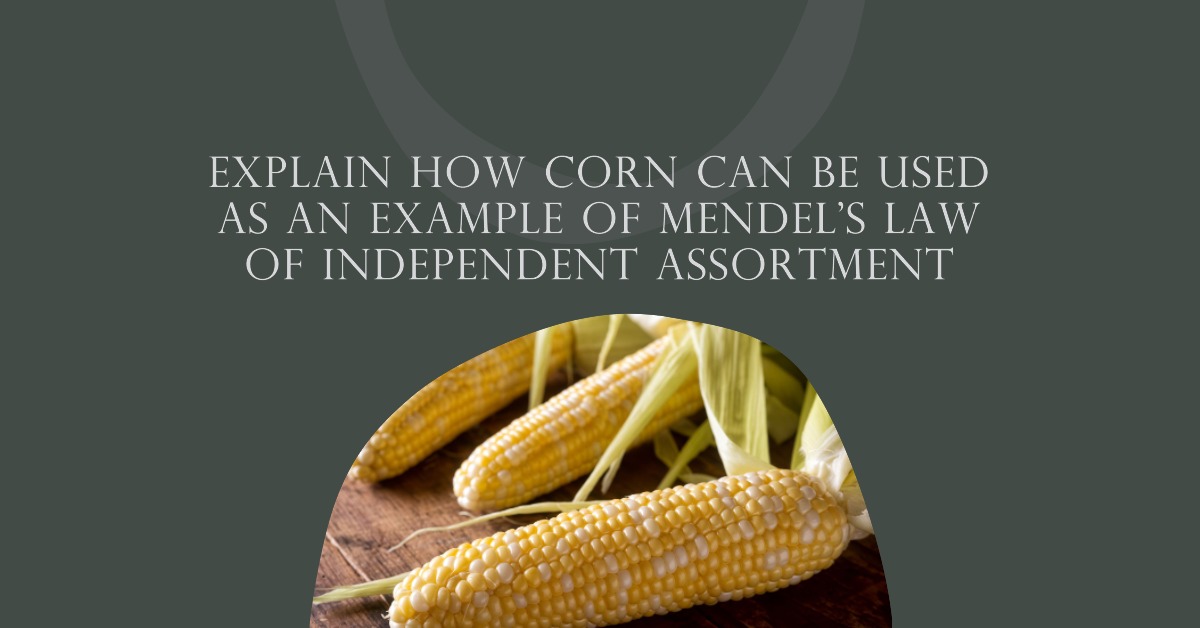Mendel’s Law of Independent Assortment is one of the three fundamental principles that Gregor Mendel, an Austrian monk and scientist, formulated based on his experiments with pea plants in the 19th century. This law explains how different genes independently separate from one another as reproductive cells develop. Although Mendel formulated his principles using pea plants, these laws are applicable to a wide range of organisms. In this article, we will explore how corn can be used as an example to illustrate Mendel’s Law of Independent Assortment.
Mendel’s Law of Independent Assortment:
Mendel’s Law of Independent Assortment states that the alleles for different traits segregate, or assort, independently of each other during the formation of gametes. In simpler terms, this means that the inheritance of an allele for one trait does not affect the inheritance of an allele for another trait.
Corn as a Model Organism:
Corn (Zea mays) is an excellent example for illustrating Mendel’s Law of Independent Assortment due to its genetic diversity and ease of cross-breeding. The kernels on an ear of corn are the result of the fertilization of individual ovules by pollen grains. Each kernel can exhibit a variety of traits, such as color, texture, and size. These traits are determined by multiple genes, each with different alleles.
The Independent Assortment in Corn:
Let’s take two traits as an example: kernel color and kernel texture. Kernel color can be either purple or yellow, and texture can be either smooth or wrinkled.
In corn, let’s assume the gene ‘C’ controls the color, where ‘C’ represents the allele for purple color and ‘c’ for yellow. Similarly, for texture, let ‘T’ represent the allele for smooth texture and ‘t’ for wrinkled texture.
If we start with two pure-breeding lines of corn, one with purple and smooth kernels (CC TT) and another with yellow and wrinkled kernels (cc tt), and cross them, the F1 generation will be heterozygous for both traits (Cc Tt) and will exhibit the dominant traits – purple and smooth kernels.
Now, according to Mendel’s Law of Independent Assortment, during gamete formation in the F1 plants, the ‘C’ or ‘c’ allele segregates independently of the ‘T’ or ‘t’ allele. This means that the possible combinations of alleles in the gametes are CT, Ct, cT, and ct. When F1 plants are cross-bred, the F2 generation will display a 9:3:3:1 phenotypic ratio, which is 9 purple smooth, 3 purple wrinkled, 3 yellow smooth, and 1 yellow wrinkled.
Conclusion:
Corn serves as an ideal example to elucidate Mendel’s Law of Independent Assortment. By studying the inheritance patterns of different traits in corn kernels, we can gain a better understanding of the independent assortment of genes and how genetic diversity arises. This knowledge is not only fundamental to genetics but also crucial in fields such as agriculture and biotechnology for crop improvement and sustainability.










